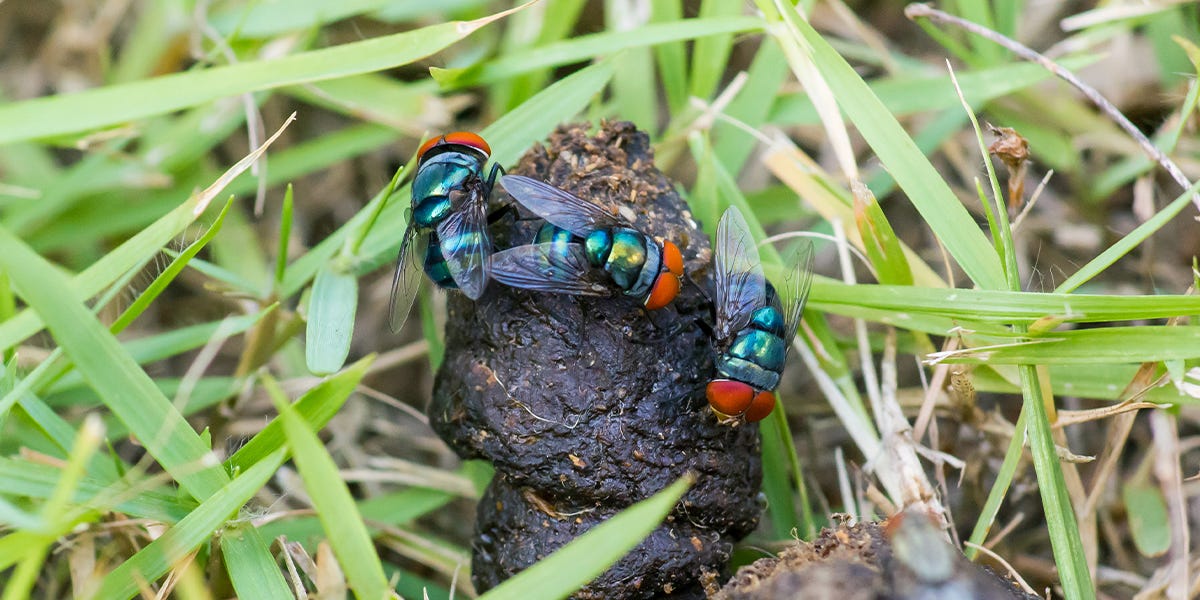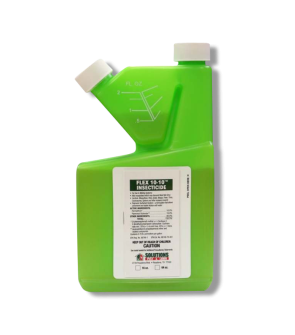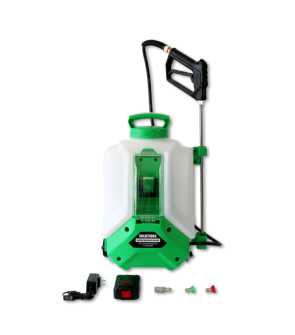Gain access to personalized product screening, the best pricing, rewards, and more!
Most Effective Products
How to Get Rid of Flies in Barns
This page is an expert guide on getting rid of flies within your barn using the products and methods suggested throughout this article. Follow this guide and use the recommended products, and we guarantee you will successfully eliminate flies from your barn.
Flies are a big issue in any home, and barns are no exception. Especially during the warmer spring and summer weather, flies can be prolific pests to livestock and barn owners. These flying pests are not only irritating, but they can pose several risks to your outdoor animals, as some can carry diseases.
They may also get into open wounds on animals and cause an infection, leading to costly veterinarian visits and treatments. Any experienced farm owner can tell you proper sanitization is the best way to prevent flies in the barn. Since flies are known to breed in damp, decaying matter like manure or bedding, essential sanitization can help control a fly population.
However, once a large number of flies have been witnessed or there's constant irritation on livestock animals, it may be time to explore other options. In most fly control scenarios, taking the necessary precautions at the beginning of each season will minimize fly infestations in barns. Implementing the following steps and insecticides quickly improves fly populations for experienced or beginning farm owners.
Why Are Flies in Barn?

If you have livestock, you are going to experience flies. Depending on the species, it may need to feed on blood to create eggs or suitable nesting sites for maggots such as wet, decaying materials. Below are some common reasons why most fly species will be within barns. Flies prefer warm, moist sites for their eggs so the larvae can grow into maggots.
Manure: Flies prefer a warm, moist environment to lay their eggs. Manure from any livestock animal in the barn or paddock promotes this environment.
Mud: Pastures soaked with mud provide the perfect breeding ground for flies because of the consistent moisture.
Urine: Wet bedding, such as hay from stalls, creates an irresistible scent to flies. This scent signifies to flies a potential warm, moist breeding ground for egg-laying activity.
Leaky Plumbing: Dripping water from sinks, pipes, faucets, garden hoses, and other plumbing in or around the barn creates a moist environment for fly eggs.
Standing Water: Flies and mosquitoes tend to breed in undisturbed water sites with some depth, such as potholes, tree trunks, water troughs, and low areas in pastures that collect rain water.
How to Control Flies in Barns
Before beginning any pesticide control plan, you will need to wear proper personal protective equipment (PPE), such as long-sleeve shirts, masks, goggles or safety glasses, an apron or Tyvek suit, gloves, and closed-toe shoes with socks.
We recommend using Flex 10-10 Insecticide within barns through automatic misting systems or ULV spraying systems to control fly populations. This emulsifiable concentrate is a broad-spectrum insecticide that can immediately knock down pests like flies and other types of insects, such as mosquitoes.
Remove all animals from the barn before applying Flex 10-10 Insecticide, and only return them when vapors, mists, and aerosols have dispersed, and the area has been thoroughly ventilated.
When used in dairy barns and facilities, Close milk bulk tank lids to prevent contamination from spray and dead or falling insects. Remove or cover milking utensils before application. Wash animals' teats before milking. Cover any exposed food, drinking water, drinking fountains, and animal feed before application.
Step 1: Manage Manure

Piles of manure in your barn or scattered droppings in the pasture are prime breeding sites for flies. Likewise, bedding such as hay soaked with urine and other decaying organic matter helps multiply fly populations.
Keep your manure and discarded animal bedding piles several feet away from your barn's foundation and paddock areas but close enough for access. We recommend cleaning manure and wet bedding at the beginning and end of the day. Waste piles can be covered with a black plastic tarp to deter flies.
Eliminate wet hay stacks or straw bales and wet feed, as this will also create ideal fly breeding sites.
Step 2: Control Moisture

Moisture control is very important for flies, as wet areas from bedding or leaky pipes are common breeding grounds. Keep your stalls dry by consistently replacing bedding.
Puddles of stagnant water around and in your barn can also be a fly breeding site, so you will want to install proper drainage systems. Address sources of water leakage by caulking around pipes, cracks, crevices, voids, and barn plumbing. Cover rain barrels and repair holes in the field surface where water gathers. Clean up any spilled or uneaten feed from the floor and corners of buckets or troughs, as this may also collect water and attract flies.
Water containers and feed pans will need to be cleaned regularly and scrubbed free of dirt and algae to disrupt flies' breeding sites. Overturn any objects collecting standing water, such as bird baths, buckets, spare tires, farming equipment, pots, and pot holders.
You will also need to repair any holes in the roof to prevent moisture issues. Installing fans in barns promotes airflow, which can help to dry out moisture and make it difficult for flies to travel.
Step 3: Place Fly Traps Inside
Flies and their activities can be monitored or controlled with various forms of fly traps, but we recommend using hangable sticky flytraps. Due to their small, compact design, fly traps like the Musca-Stik are effective for capturing flies within and around your barn. This product not only assesses fly populations but also has two forms of attractants with its coloration and powerful sex pheromone scent.
Simply sprinkle the included pheromone attractant granules over the length of the Musca-Stik or pour them into the bottom of the plastic end cap. Pull out the hook at the top of the product and hang it in areas out of reach of animals, like ceilings in the aisles or rafters above stalls. Replace the Musca-Stik when 80% or more of the product's surface is covered by flies.
Step 4: Space Spray
One of the most popular methods in fly control is applications such as space spray with a pyrethroid insecticide. Flex 10-10 Insecticide is a broad-spectrum pyrethroid product with a combination of a pbo synergist for repelling a wide variety of pests.
This product is best applied with a type of ULV sprayer such as the Solutions 4 Gallon Battery-Powered Backpack Sprayer, which can hold up to 4 gallons of insecticide material.
To control moderate infestation of flies in barns, you will need to dilute 4 teaspoons of Flex 10-10 per gallon of water (1:200). This makes 0.05% permethrin ready-to-use product. For severe infestations in barns, use 8 teaspoons of product per gallon (1:100). This makes 0.1% permethrin ready-to-use product.
In areas such as animal quarters, dairy and beef barns, or other listed livestock or animal housing areas, use 1/2 gallon (64 fl. oz.) of Flex 10-10 in 55 gallons of water to yield a solution of 0.09% permethrin plus 0.09% PBO. For high populations of flies, mix up to 1 gallon of Flex 10-10 in 55 gallons of water to yield a solution of 0.18% permethrin and 0.18% piperonyl butoxide.
When filling the backpack sprayer tank, partially fill the system reservoir tank with half the amount of water, add measured concentrates to the tank, and then add the remaining half of water to obtain the desired dilution.
The backpack sprayer nozzle should be set to deliver fine particle droplets as an aerosol or mist. Nozzles should be rated for delivery rate not to exceed 1.25 fl. oz. of solution per minute, with one nozzle covering 100 square feet.
Key Takeaways
How to Get Rid of Flies Around Barn
- To remove flies in and around barns or stables, we recommend applying Musca-Stick in out-of-reach areas within barns and Flex 10-10 as a space spray when the structure is empty.
What Type of Spray Should Be Done In Barns
- Barns best use palm or space sprays to control fly populations and activities.
How to Prevent Flies in Barns
- To prevent flies in barns, continue with proper sanitization methods such as cleaning manure and wet bedding and relocating waste from a good distance away from the barn's foundation. In addition, address moisture issues such as leaky plumbing or pools of water in pastures. Continue on a quarterly basis with Flex 10-10 Insecticides.











